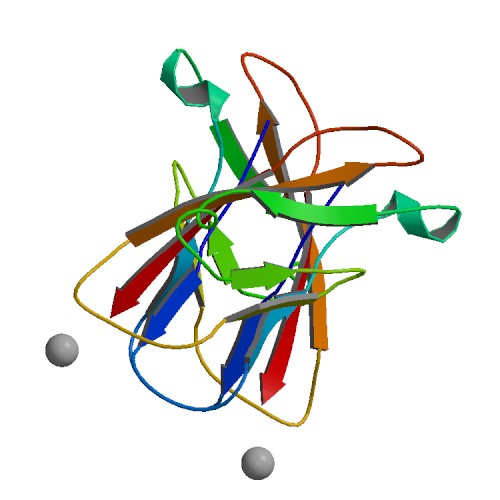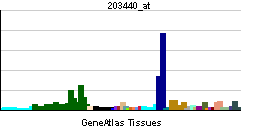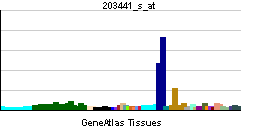CDH2
| Cadherin 2, type 1, N-cadherin (neuronal) | |||||||||||||
|---|---|---|---|---|---|---|---|---|---|---|---|---|---|
 PDB rendering based on 1ncg. | |||||||||||||
| |||||||||||||
| Identifiers | |||||||||||||
| Symbols | CDH2 ; CDHN; CDw325; NCAD | ||||||||||||
| External IDs | Template:OMIM5 Template:MGI HomoloGene: 20424 | ||||||||||||
| |||||||||||||
| RNA expression pattern | |||||||||||||
 | |||||||||||||
 | |||||||||||||
| More reference expression data | |||||||||||||
| Orthologs | |||||||||||||
| Template:GNF Ortholog box | |||||||||||||
| Species | Human | Mouse | |||||||||||
| Entrez | n/a | n/a | |||||||||||
| Ensembl | n/a | n/a | |||||||||||
| UniProt | n/a | n/a | |||||||||||
| RefSeq (mRNA) | n/a | n/a | |||||||||||
| RefSeq (protein) | n/a | n/a | |||||||||||
| Location (UCSC) | n/a | n/a | |||||||||||
| PubMed search | n/a | n/a | |||||||||||
Cadherin 2, type 1, N-cadherin (neuronal), also known as CDH2, is a human gene. CDH2 has also been designated as CD325 (cluster of differentiation 325).
This gene is a classical cadherin from the cadherin superfamily. The encoded protein is a calcium dependent cell-cell adhesion glycoprotein comprised of five extracellular cadherin repeats, a transmembrane region and a highly conserved cytoplasmic tail. The protein functions during gastrulation and is required for establishment of left-right asymmetry. At certain central nervous system synapses, presynaptic to postsynaptic adhesion is mediated at least in part by this gene product.[1]
References
Further reading
- Doherty P, Smith P, Walsh FS (1997). "Shared cell adhesion molecule (CAM) homology domains point to CAMs signalling via FGF receptors". Perspectives on developmental neurobiology. 4 (2–3): 157–68. PMID 9168198.
- Makrigiannakis A, Coukos G, Blaschuk O, Coutifaris C (2000). "Follicular atresia and luteolysis. Evidence of a role for N-cadherin". Ann. N. Y. Acad. Sci. 900: 46–55. PMID 10818391.
- Hazan RB, Qiao R, Keren R; et al. (2004). "Cadherin switch in tumor progression". Ann. N. Y. Acad. Sci. 1014: 155–63. PMID 15153430.
- Cavallaro U (2005). "N-cadherin as an invasion promoter: a novel target for antitumor therapy?". Current opinion in investigational drugs (London, England : 2000). 5 (12): 1274–8. PMID 15648948.
- Salomon D, Ayalon O, Patel-King R; et al. (1992). "Extrajunctional distribution of N-cadherin in cultured human endothelial cells". J. Cell. Sci. 102 ( Pt 1): 7–17. PMID 1500442.
- Knudsen KA, Wheelock MJ (1992). "Plakoglobin, or an 83-kD homologue distinct from beta-catenin, interacts with E-cadherin and N-cadherin". J. Cell Biol. 118 (3): 671–9. PMID 1639850.
- Reid RA, Hemperly JJ (1990). "Human N-cadherin: nucleotide and deduced amino acid sequence". Nucleic Acids Res. 18 (19): 5896. PMID 2216790.
- Walsh FS, Barton CH, Putt W; et al. (1990). "N-cadherin gene maps to human chromosome 18 and is not linked to the E-cadherin gene". J. Neurochem. 55 (3): 805–12. PMID 2384753.
- Selig S, Bruno S, Scharf JM; et al. (1995). "Expressed cadherin pseudogenes are localized to the critical region of the spinal muscular atrophy gene". Proc. Natl. Acad. Sci. U.S.A. 92 (9): 3702–6. PMID 7731968.
- Wallis J, Fox MF, Walsh FS (1994). "Structure of the human N-cadherin gene: YAC analysis and fine chromosomal mapping to 18q11.2". Genomics. 22 (1): 172–9. doi:10.1006/geno.1994.1358. PMID 7959764.
- Andersson AM, Edvardsen K, Skakkebaek NE (1995). "Expression and localization of N- and E-cadherin in the human testis and epididymis". Int. J. Androl. 17 (4): 174–80. PMID 7995652.
- Matsuyoshi N, Imamura S (1997). "Multiple cadherins are expressed in human fibroblasts". Biochem. Biophys. Res. Commun. 235 (2): 355–8. doi:10.1006/bbrc.1997.6707. PMID 9199196.
- Navarro P, Ruco L, Dejana E (1998). "Differential localization of VE- and N-cadherins in human endothelial cells: VE-cadherin competes with N-cadherin for junctional localization". J. Cell Biol. 140 (6): 1475–84. PMID 9508779.
- Gaidar YA, Lepekhin EA, Sheichetova GA, Witt M (1998). "Distribution of N-cadherin and NCAM in neurons and endocrine cells of the human embryonic and fetal gastroenteropancreatic system". Acta Histochem. 100 (1): 83–97. PMID 9542583.
- Kremmidiotis G, Baker E, Crawford J; et al. (1998). "Localization of human cadherin genes to chromosome regions exhibiting cancer-related loss of heterozygosity". Genomics. 49 (3): 467–71. doi:10.1006/geno.1998.5281. PMID 9615235.
- Lu Q, Paredes M, Medina M; et al. (1999). "delta-catenin, an adhesive junction-associated protein which promotes cell scattering". J. Cell Biol. 144 (3): 519–32. PMID 9971746.
- Shan WS, Tanaka H, Phillips GR; et al. (2000). "Functional cis-heterodimers of N- and R-cadherins". J. Cell Biol. 148 (3): 579–90. PMID 10662782.
- Husi H, Ward MA, Choudhary JS; et al. (2000). "Proteomic analysis of NMDA receptor-adhesion protein signaling complexes". Nat. Neurosci. 3 (7): 661–9. doi:10.1038/76615. PMID 10862698.
External links
- CDH2+protein,+human at the US National Library of Medicine Medical Subject Headings (MeSH)
| Stub icon | This membrane protein–related article is a stub. You can help Wikipedia by expanding it. |
This article incorporates text from the United States National Library of Medicine, which is in the public domain.